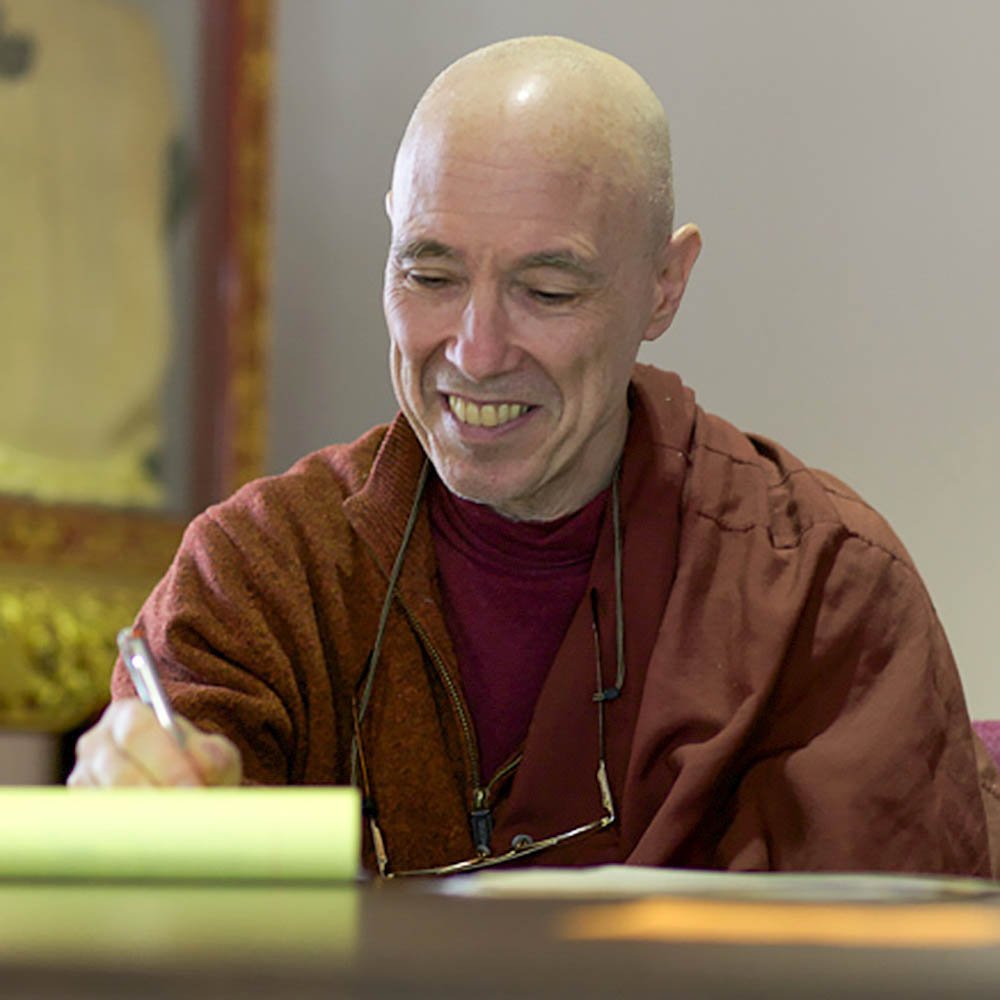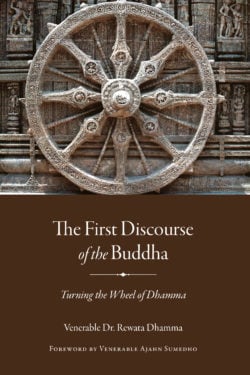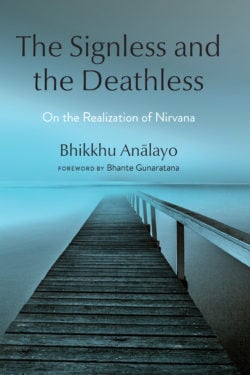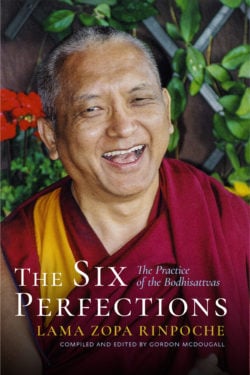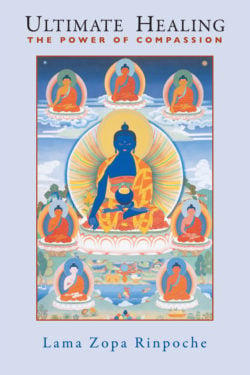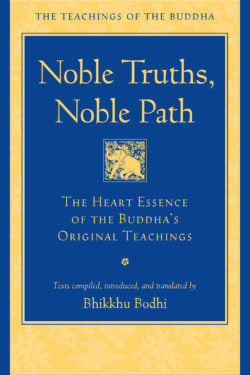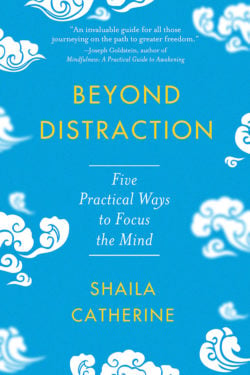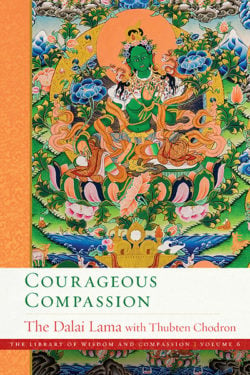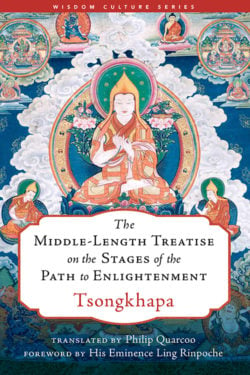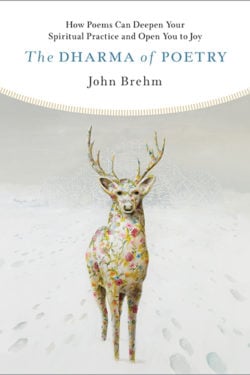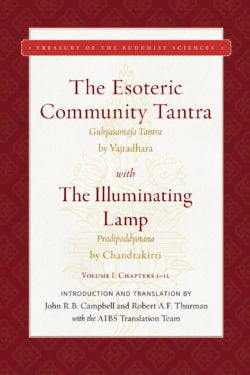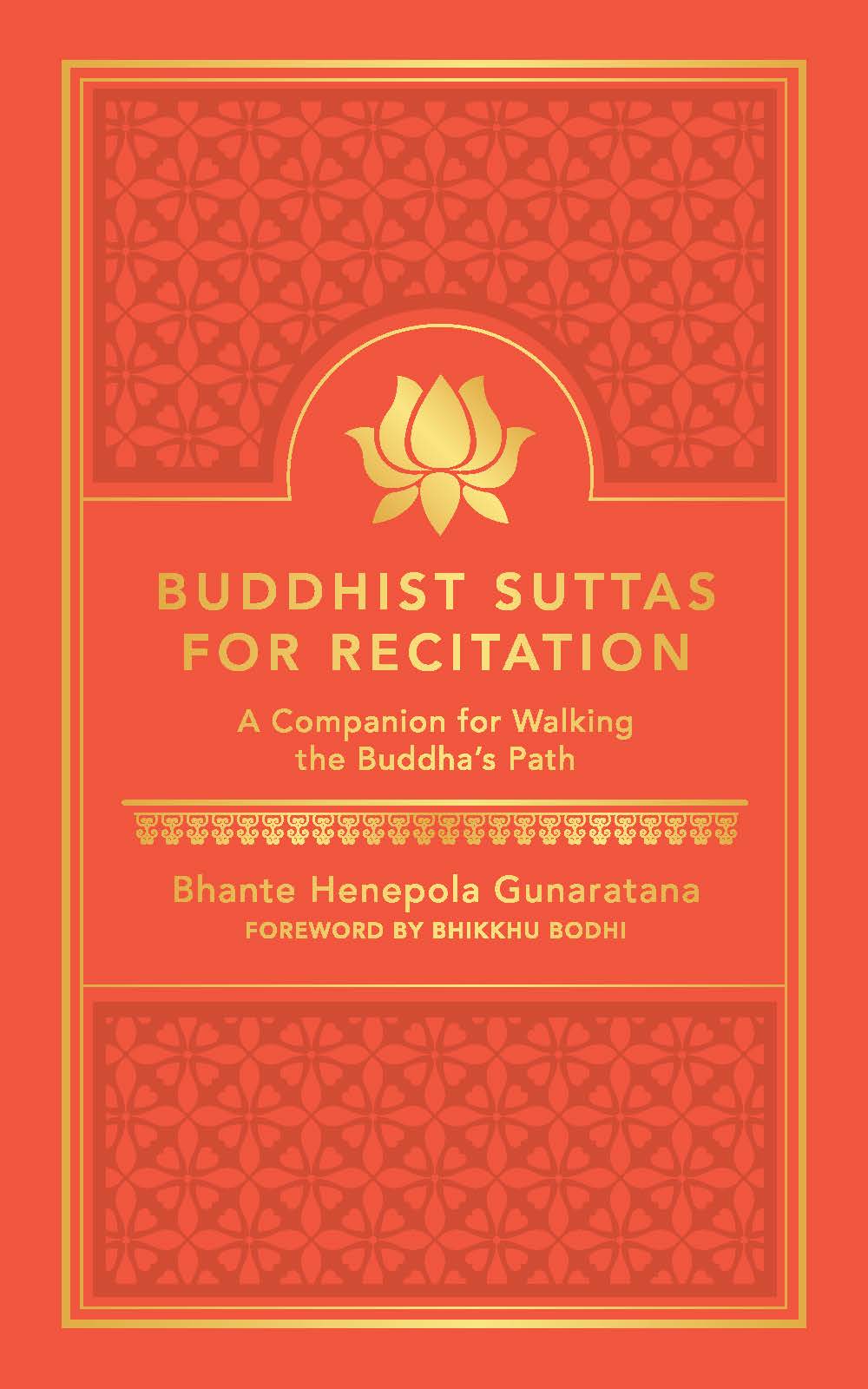
BUDDHIST SUTTAS FOR RECITATION
Bring the Buddha’s teachings more deeply into your life.
Buddhist Suttas for Recitation provides everything you need to begin and maintain a practice of contemplative recitation and reflection. These practices will deepen your connection to the Buddha, strengthen your faith in the Path, and nurture your intellectual understanding of the Dhamma.
This unique volume includes carefully chosen discourses of the Buddha from the Pali Canon—presented in inspiring and accessible English with accompanying Pali—that convey the essence of the Dhamma. The introductory material explains the relationship between meditation and devotional practice, offers instructions on setting up a home altar, and gives advice on how to use these texts to enhance your spiritual development.
- Paperback
- 5.25 x 8.25 inches
- $26.95
- ISBN 9798890700452
- eBook
- $14.95
- ISBN 9781614295129
Discover More
The First Discourse of the Buddha
Two months after the Buddha attained enlightenment under the Bodhi Tree, he traveled to Sarnath, India. There he delivered his first discourse to a group of five ascetics in Deer Park. This teaching, known as the “First Turning of the Wheel of Dhamma” or the Dhammacakka Sutta, contains the foundational teachings of all Buddhism. In it the Buddha explains the way to freedom from suffering through the teachings of the Four Noble Truths and the Noble Eightfold Path.
With this translation and its verse-by-verse commentary, Dr. Dhamma brings fresh insight to the Dhammacakka Sutta. Drawing on the rich Burmese monastic scholarly tradition and his own experiences as a vipassanā practitioner, Dr. Dhamma makes clear the precise steps necessary for the realization of the teachings contained in the Buddha’s first discourse.
The Perfection of Wisdom in First Bloom
See the formative years of Mahayana Buddhist literature through the lens of the Perfection of Wisdom, expertly analyzed by the venerable scholar-monk Bhikkhu Analayo.
In this work we have a rare perspective on the early history of Mahayana Buddhism and the Perfection of Wisdom (Prajnaparamita), as far as this is still accessible in surviving texts. With his characteristic clarity and precision, Bhikkhu Analayo critically analyzes early Perfection of Wisdom literature based on the earliest extant versions of the Astasahasrika Prajnaparamita, or the Perfection of Wisdom in Eight Thousand Lines, one in Chinese and the other in Gandhari—one of the oldest surviving Mahayana manuscripts discovered to date. In reading this text from the viewpoint of early Buddhist literature, the author shows that what has generally been considered a sharp rupture in the formation of the Mahayana turns out to be more of a gradual evolution.
With his command of the languages of the ancient Buddhist world, scholar-monk Bhikkhu Analayo sifts through the layers of history and unveils new perspectives on the ideas and figures in early Perfection of Wisdom and Mahayana literature, covering such topics as the rhetoric of emptiness and the emerging bodhisattva ideal, as well as the status of women and the practice of self-immolation. In doing so, Bhikkhu Analayo reveals fresh insights into the gradual development that informs the emergence of early Perfection of Wisdom literature. This is a rare opportunity to peer through a window at the beginnings of Mahayana thought—before the traditions had coalesced into the familiar forms we see today.
The Signless and the Deathless
An insightful examination of the end of suffering drawing much-needed attention to two overlooked factors of Nirvana: signlessness and deathlessness. Includes a foreword by Bhante Gunaratana.
Nirvana is at once a critical part of the Buddhist path and a concept difficult to fully understand for Buddhist practitioners. Canonical texts broach this mysterious and essential idea in a variety of ways, whether in the form of metaphor or literary description. In The Signless and the Deathless: On the Realization of Nirvana, scholar-monk Bhikkhu Anālayo sheds light on two key aspects of Nirvana that have gone underappreciated: signlessness and deathlessness.
Commanding an extraordinary mastery of canonical Buddhist languages, Venerable Anālayo breaks new ground, or rediscovers old ground, by presenting a new way of approaching Nirvana, based on the Buddha’s teachings on how our minds construct experience. This novel treatment, backed up by meticulous academic expertise, is valuable for scholars and practitioners alike.
Through practicing bare awareness…realizing Nirvana entails “a complete stepping out of the way the mind usually constructs experience.”
The Power of Mantra
Energize your practice with the potent energy of mantra.
In this book, beloved teacher Lama Zopa Rinpoche guides us through the most popular mantras in Tibetan Buddhism: Shakyamuni Buddha, Chenrezig, Manjushri, Tara, Medicine Buddha, Vajrasattva, and more.
A mantra—literally “that which protects the mind”—is a series of Sanskrit syllables that evoke the energy of a particular buddha or bodhisattva. It works as a sacred sound that brings blessings to ourself and others, and as a tool to transform our mind into one that is more compassionate and wise.
In clear and succinct teachings, Lama Zopa shows us why we need different mantras and how each mantra works. He also explains their importance and power, giving specific instructions for practicing them. The exquisite, full-color illustrations of the deities that accompany the text make this book a beautiful guide, one suitable for both beginners and experienced practitioners.
The Wisdom Culture Series, published under the guidance of Lama Zopa Rinpoche, provides English-language readers with key works for the study and cultivation of the Mahayana Buddhist path, especially works of masters within the lineage of Lama Tsongkhapa and the Geluk school of Tibetan Buddhism.
Bodhichitta
An accessible, inspiring book on one of the most important topics in Tibetan Buddhism, written by one of its renowned masters who has an international following of thousands.
Bodhichitta is a Sanskrit word meaning “the mind of enlightenment” or “the awakening mind”—the mind that wishes to achieve enlightenment in order to lead all other beings into that same state. It is the attitude of the bodhisattva, of the person who makes the compassionate vow to save others from suffering. In this book, the renowned teacher Lama Zopa Rinpoche shows us how to achieve it.
First, Lama Zopa gives a clear and comprehensive explanation of bodhichitta, its benefits, and its importance to the path. Then, he walks us through the two main methods for achieving bodhichitta: the seven points of cause and effect, and equalizing and exchanging self and others. Finally, the book closes with meditation instructions to guide and strengthen our practice.
Readers will find Bodhichitta to be a comprehensive guide to this core Buddhist principle, one rich in both accessible philosophical explanation and concrete advice for practitioners.
Patience
The sixth chapter of Shantideva’s classic A Guide to the Bodhisattva’s Way of Life is a beacon of inspiration that shows what patience—one of the essential actions of the bodhisattvas—can really mean, leading us to profound self-realization and a heightened determination for awakened action in the world.
Lama Zopa Rinpoche—a teacher whose very name means “patience”—explores Shantideva’s teachings verse by verse, unpacking their lessons for the modern reader, including:
- overcoming anger,
- accepting suffering,
- and respecting others and finding happiness in their happiness.
In explaining this quintessential quality of a bodhisattva, Rinpoche shows us ordinary beings the profundity of the practice of patience and the relevance it has in our everyday lives.
“Shantideva was like us, but he worked on his mind until he became completely free from delusions . . . A Guide to the Bodhisattva’s Way of Life has inspired countless people since it was written over thirteen hundred years ago. It tells us that we too can develop our mind to the levels of realizations that the great masters have attained—and it shows us how to do it.”—Lama Zopa Rinpoche
The Six Perfections
The six perfections are the actions of the bodhisattvas—holy beings who have transcended selfless concerns. But they’re also skills we can and should develop right now, in our messy, ordinary lives.
In this clear, comprehensive guide to the backbone of Mahayana Buddhist practice, Lama Zopa Rinpoche walks us through each of the six perfections:
- charity
- morality
- patience
- perseverance
- concentration
- wisdom
As he carefully describes each perfection, he not only reveals the depth of its meaning and how it intertwines with each other perfection, but he also explains how to practice it fully in our everyday lives—offering concrete ways for us to be more generous, more patient, more wise. With the guidance he gives us, we can progress in our practice of the perfections until we, like the bodhisattvas, learn to cherish others above ourselves.
“The perfections are the practices of bodhisattvas, holy beings who have completely renounced the self; they have transcended selfish concerns and cherish only others. Each perfection is perfect, flawless. Each arises from bodhichitta and is supported by the other perfections, including the wisdom of emptiness. Because of that, a bodhisattva generates infinite merit every moment, whether outwardly engaged in working for others or not. A bodhisattva’s bodhichitta never stops.”
—Lama Zopa Rinpoche
Ultimate Healing
We experience illness on a physical level, but in order to be healed, we must understand where true healing begins: within our hearts and minds. In Ultimate Healing, internationally renowned meditation master Lama Zopa Rinpoche helps us to recognize the root of illness and gives us the tools to create our future happiness. Beginning with stories of people who have recovered from disease through meditation, Rinpoche addresses the central role played by karma and by the mental habit of “labeling” in causing illness, and shows how meditation and other thought techniques for developing compassion and insight can eliminate the ultimate cause of all disease.
Ultimate Healing shows us that by transforming our minds, especially through the development of compassion, we can eliminate the ultimate cause of all disease. In addition to relating stories of people who have recovered from disease through meditation, Lama Zopa presents practical healing meditations, including white-light healing, compassion meditation, “taking and giving”, and techniques to cure depression.
Noble Truths, Noble Path
Bhikkhu Bodhi’s newest anthology!
Brilliantly translated by Bhikkhu Bodhi, this anthology of suttas from the Saṃyutta Nikāya takes us straight to the heart of the Buddha’s teaching on liberation through the four noble truths and the noble eightfold path—the two mainstays of Buddhist doctrine that illuminate the nature of things by generating direct insight into the teachings. These suttas all pertain to the ultimate good, the attainment of nibbāna or liberation. They illuminate the Buddha’s radical diagnosis of the human condition—and more broadly, the condition of all sentient existence—in light of the four noble truths. They underscore the pervasive flaws inherent in the round of rebirths, trace our existential predicament to its deepest roots, and lay out the path to unraveling our bondage and winning irreversible release. Ven. Bodhi arranged the chapters, each with its own introduction, to provide an overview of the Dhamma that mirrors the four noble truths, thus enabling students of Early Buddhism to see into the heart of the Buddha’s teachings as directly and clearly as possible.
For those interested in the Pāli language, Bhikkhu Bodhi provides linguistic and grammatical explanations of the suttas included in this book in his Reading the Buddha’s Discourses in Pāli.
Learn more about the Teachings of the Buddha series.
Beyond Distraction
The mind can be a potent tool, used to guide extraordinary achievements, inspire good works, and incline your spiritual path toward peace and awakening. But the mind can also produce thoughts that lead to suffering. For many people, thoughts run rampant and seem to oppress or control their lives. Even the Buddha tells us that before his enlightenment, he sometimes found his mind preoccupied by thoughts connected with sensual desire, ill will, and harm. But he figured out how to respond to thoughts skillfully and developed a step-by-step approach to calm the restless mind. Now, Insight Meditation teacher Shaila Catherine offers an accessible approach to training the mind that is guided by the Buddha’s pragmatic instructions on removing distracting thoughts. Drawing on two scriptures in the Middle Length Discourses of the Buddha, Shaila shows you how to overcome habitual modes of thinking, develop deeper concentration, and discover the insights into emptiness that are vital for a liberating spiritual path.
Following the Buddha’s pragmatic approach, Shaila guides you through five steps for overcoming distraction and focusing the mind:
- Replace unwholesome thoughts with wholesome thoughts.
- Examine the dangers of distracting thoughts.
- Avoid it, ignore it, forget it.
- Investigate the causes of distraction.
- Apply determination and resolve.
Each chapter includes exercises and reflections to help you cultivate the five steps to deeper concentration. You’ll learn about your mind and develop your ability to direct your attention more skillfully in meditation and daily activities. And ultimately, you’ll discover for yourself how these five steps boil down to one key realization: In the moment you recognize that a thought is just a thought, you will find yourself on the path to a life of remarkable freedom.
Liberation from Samsara
This rare teaching by Rinpoché is a uniquely concise volume of the teachings of the path to liberation that is authentic, authoritative, and complete.
In Liberation from Samsara, the Fourth Kyabjé Dodrupchen Rinpoché presents the Longchen Nyingthik preliminary teachings, with a special focus on guru yoga. These teachings, from the innermost secret instruction of Dzogchen, constitute a complete path to enlightenment.
After discussing the ways to turn our mind toward Dharma and the trainings, Rinpoché provides guru yoga instruction as he turns to the main tantric practice: meditations on unifying one’s mind with Guru Rinpoché’s wisdom mind. This rare teaching by Rinpoché, though intentionally succinct to accommodate the needs of contemporary Western practitioners, presents a complete path to enlightenment. It contrasts three different paths to liberation: Shravakayana (the way of the disciple), Pratyekabuddhayana (the way of the self-enlightened buddha), and Mahāyāna (the way of the bodhisattva), which is our way, our boundless intention to seek refuge in order to free all sentient beings from samsaric suffering.
Courageous Compassion
Courageous Compassion, the sixth volume of the Library of Wisdom and Compassion, continues the Dalai Lama’s teachings on the path to awakening. The previous volume, In Praise of Great Compassion, focused on opening our hearts with love and compassion for all living beings, and the present volume explains how to embody compassion and wisdom in our daily lives. Here we enter a fascinating exploration of bodhisattvas’ activities across multiple Buddhist traditions—Tibetan, Theravāda, and Chinese Buddhism.
After explaining the ten perfections according to the Pāli and Sanskrit traditions, the Dalai Lama presents the sophisticated schema of the four paths and fruits for śrāvakas and solitary realizers and the five paths for bodhisattvas. Learning about the practices mastered by these exalted practitioners inspires us with knowledge of our minds’ potential. His Holiness also describes buddha bodies, what buddhas perceive, and buddhas’ awakening activities.
Courageous Compassion offers an in-depth look at bodhicitta, arhatship, and buddhahood that you can continuously refer to as you progress on the path to full awakening.
Learn more about the Library of Wisdom and Compassion series.
The Middle-Length Treatise on the Stages of the Path to Enlightenment
Tsongkhapa (1357–1419), author of the well-known Great Treatise on the Stages of the Path to Enlightenment and guru to the First Dalai Lama, is renowned as perhaps Tibet’s greatest scholar-saint. A dozen years after writing his Great Treatise, he wrote the Middle-Length Treatise on the Stages of the Path to Enlightenment, presented here in its first complete English translation.
Less than half the length of the Great Treatise, this work similarly presents a systematic overview of the Buddha’s teachings. Tsongkhapa begins by abridging the longer work, distilling its meditations for quicker integration. After recognizing the rarity of our human existence and the great opportunities it affords, he follows with reflections on impermanence, suffering, and the promise of liberation from our past actions, proceeding then to the path of bodhisattvas, whose universal compassion seeks to free every being from suffering. Tsongkhapa gives especially detailed instructions on śamatha, the deep meditative concentration that is a precondition for the highest insight into the nature of reality. The final and largest section, on that very insight, is unique to this work, particularly Tsongkhapa’s presentation of conventional truth and ultimate truth. Beginners and longtime practitioners alike will cherish the clear guidance from one of Tibet’s great luminaries.
The Wisdom Culture Series, published under the guidance of Lama Zopa Rinpoche, provides English-language readers with key works for the study and cultivation of the Mahayana Buddhist path, especially works of masters within the lineage of Lama Tsongkhapa and the Geluk school of Tibetan Buddhism.
Superiority Conceit in Buddhist Traditions
Armed with his rigorous examination of the canonical records, respected scholar-monk Bhikkhu Anālayo explores—and sharply criticizes—four examples of what he terms “superiority conceit” in Buddhism:
- the androcentric tendency to prevent women from occupying leadership roles, be these as fully ordained monastics or as advanced bodhisattvas
- the Mahayana notion that those who don’t aspire to become bodhisattvas are inferior practitioners
- the Theravada belief that theirs is the most original expression of the Buddha’s teaching
- the Secular Buddhist claim to understand the teachings of the Buddha more accurately than traditionally practicing Buddhists
Ven. Anālayo challenges the scriptural basis for these conceits and points out that adhering to such notions of superiority is not, after all, conducive to practice. “It is by diminishing ego, letting go of arrogance, and abandoning conceit that one becomes a better Buddhist,” he reminds us, “no matter what tradition one may follow.”
Thoroughly researched, Superiority Conceit in Buddhist Traditions provides an accessible approach to these conceits as academic subjects. Readers will find it not only challenges their own intellectual understandings but also improves their personal practice.
The Dharma of Poetry
In The Dharma of Poetry, John Brehm shows how poems can open up new ways of thinking, feeling, and being in the world. Brehm demonstrates the practice of mindfully entering a poem, with an alertness, curiosity, and open-hearted responsiveness very much like the attention we cultivate in meditation. Complete with poetry-related meditations and writing prompts, this collection of lively, elegantly written essays can be read as a standalone book or as a companion to the author’s acclaimed anthology The Poetry of Impermanence, Mindfulness, and Joy.
Listen to a Wisdom Dharma Chat with John and host Daniel Aitken recorded in October 2023.
The Esoteric Community Tantra with The Illuminating Lamp
This volume is a translation of the first twelve chapters of The Glorious Esoteric Community Great King of Tantras (Śrī Guhyasamāja Mahā-tantra-rāja), along with the commentary called The Illuminating Lamp (Pradīpoddyotana-nāma-ṭīkā), a commentary in Sanskrit on this tantra by the seventh-century Buddhist intellectual and tantric scholar-adept Chandrakīrti. Regarded by Indo-Tibetan tradition as the esoteric scripture wherein the Buddha revealed in greatest detail the actual psycho-physical process of his enlightenment, The Esoteric Community Tantra is a preeminent text of the class of scriptures known to Indian Buddhist scholar-adepts as great yoga tantra, and later to their Tibetan successors as unexcelled yoga tantra. The Illuminating Lamp presents a system of interpretive guidelines according to which the cryptic meanings of all tantras might be extracted in order to engage the ritual and yogic practices taught therein. Applying its interpretive strategies to the text of The Esoteric Community Tantra, The Illuminating Lamp articulates a synthetic, “vajra vehicle” (vajrayāna) discourse that locates tantric practices and ideals squarely within the cosmological and institutional frameworks of exoteric Mahāyāna Buddhism.
Abiding in Emptiness
Before the growth of the Mahāyānā and the Perfection of Wisdom, the Buddha gave his own teachings, to his attendant Ānanda, on the importance of emptiness (Pāli suññatā, Sanskrit śūnyatā) in formal meditation and everyday practice. In this volume, renowned scholar-monk Bhikkhu Anālayo explores these teachings and shows us how to integrate them into our lives.
Bhikkhu Anālayo draws from instructions found in the Greater and the Smaller Discourses on Emptiness (the Mahāsuññatasutta and the Cūḷasuññatasutta). In each chapter, he provides a translation of a pertinent excerpt from the discourses, follows this with clear and precise explanations of the text, and concludes by offering instructions for practice.
Step by step, beginning with daily life and concluding with Nirvana, Bhikkhu Anālayo unpacks the Buddha’s teachings on the foundational teaching of emptiness.
Buddha’s Words for Tough Times
Twenty translations from the vast corpus of Buddhist literature come alive in this full-color anthology of ancient wisdom for turbulent times, as a master scholar uncovers their sources and significance.
Change and loss have always been part of the human condition, but in today’s world, the pace and intensity of uncertainty has reached new extremes. The Buddha observed the truth of impermanence more than 2,500 years ago and diagnosed the source of the anxiety it engenders so incisively that his prescription still resonates and heals here and now.
In Buddha’s Words for Tough Times, Peter Skilling, one of the world’s foremost authorities on Buddhist scripture, brings the reader face to face with the wealth of Buddhist literature, from a teaching in a single word, to a seminal collection of verses on impermanence, to narrations of the Buddha’s teaching journeys across the Gangetic Plain. Translating from sources in Tibetan, Sanskrit, and Pāli, he uncovers the complex history of the vast writings of the Buddhist canons, and his skill in revealing the meaning of twenty gems from within those riches brings them alive for English readers. We could have no better guide for this exploration, an exploration whose value is more urgent than ever.


